The Ruler Brand Archetype
The Ruler, as you might guess, is a leader. Their priority is to bring order. The ruler is quite, but they may come across as a perfectionist. This isn’t a bad thing if they can consistently project an air of competence and can back that up. The ruler naturally wants everyone to follow their lead.
The Ruler brand archetype is driven by its strength and power. Ruler brands build a reputation for speaking authoritatively. They aggressively utilize whatever channels are available to further this perception. That may include content marketing, or it may take the form of thought leadership or both. Ruler brands are associated with wealth and success. They’re often portrayed as masculine, but this is definitely not a requirement.
They use their might to bring order to chaos, providing straightforward solutions to consumer problems. They promise their customers the ability to change their lives.
Strengths
Brand Promise: Self-actualization
Goal: To bring order to chaos.
Strategy: Systematic expression of power to achieve an end goal.
Personality to project: peacemaker, conductor, power broker.
Ideal Customer: Anyone who is likewise dominant and who isn’t afraid to take bold action. These are people who won’t settle. They demand the best of the best.
Weakness
Weakness: Can be seen as stodgy, out of date or unyielding.
Potential solutions:
- From time to time, go out of your way to come up with new, innovative products or services.
- Occasionally, do the unexpected. If you never put your products on sale, consider holding a ‘one-time sales event.‘
- Utilize social media marketing to engage with new demographics.
The Ruler archetype, a concept deeply ingrained in Carl Jung’s theories of the collective unconscious, represents the quintessence of leadership, control, and sovereignty. Emerging from the depths of Jungian psychology, this archetype embodies the universal patterns and images that manifest across various cultures and historical periods, resonating deeply within the human psyche.
At its core, the Ruler archetype appeals to a fundamental human longing for order, stability, and predictability amidst the chaos of life. It attracts those who seek to assert control over their environment, offering a sense of security and structure.
When infused into branding and storytelling, this archetype conveys a sense of authority and competence, assuring audiences of expertise and guidance. It taps into our intrinsic desire for dependable leadership and the comfort of being aligned with power and success.
The Ruler archetype, therefore, becomes a powerful tool in storytelling and branding, striking chords of trust, reliability, and aspirational quality.
Characteristics of the Ruler Archetype
Leadership & Authority
Brands or characters embodying the Ruler archetype often project an image of control and command, positioning themselves as leaders in their respective domains.
Wealth & Exclusivity
Symbolizes achievement and high status through luxurious branding, premium quality products, and services that denote superiority and exclusivity.
Dependability & Focus
Brands are seen as trustworthy, consistent, and effective. Goal-driven with clear vision, making them attractive to those who value stability and success.
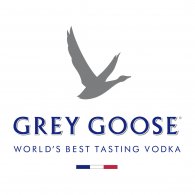



Ruler Archetype in Branding
In branding, the Ruler archetype is embodied through an array of strategic elements that convey authority, control, and exclusivity. Brands that adopt this archetype often do so by crafting an image that exudes confidence, leadership, and success. Their marketing strategies typically showcase superiority, reliability, and the high status of their products or services.
Visual Identity
Elegant, sophisticated, and often minimalistic style that underscores premium status through carefully aligned color palettes, typography, and imagery projecting luxury and power.
Brand Messaging
Assertive communication focusing on legacy, market leadership position, and premium quality. The messaging emphasizes the brand’s commitment to excellence and superiority.
Case Studies
Rolex
Crafts a narrative of success and prestige. Their watches are not merely timepieces but symbols of achievement and high status.
Mercedes-Benz
Branding revolves around its legacy of quality, luxury, and engineering excellence. Their slogan, ‘The Best or Nothing,’ perfectly encapsulates the Ruler archetype.
Challenges and Strategies for Ruler Brands
Brands embodying the Ruler archetype face distinct challenges, such as the perception of rigidity or elitism. To counter this, they must find ways to remain approachable and relevant.
This involves balancing their authoritative image with elements of warmth and relatability. Innovative approaches can be used to refresh the brand’s appeal without diluting its core identity.
Innovation, crucial for keeping the Ruler brand fresh and relevant, must be strategically aligned with the brand’s identity. This could mean embracing new technologies or trends while maintaining the brand’s core values of leadership and excellence.
It’s a delicate balancing act of preserving tradition and embracing change, ensuring the brand remains respected for its stability and admired for its forward-thinking approach.
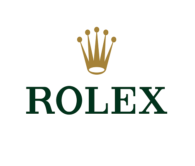
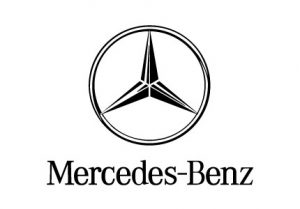
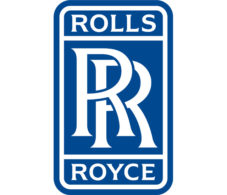
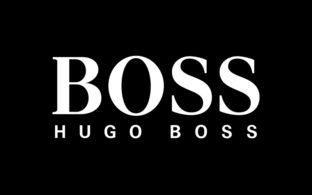
Ruler Archetype in Popular Culture
The Ruler archetype is prominently featured in popular culture, particularly in films and literature, where it shapes some of the most iconic and memorable characters.
Tony Stark
Iron Man
Embodies the Ruler archetype through his leadership, innovation, and wealth. His character arc shows the commanding presence and ingenuity typical of a Ruler, plus his journey toward using power responsibly.
Miranda Priestly
The Devil Wears Prada
Commands respect and fear through her position of power in the fashion industry. Her character showcases the Ruler’s association with exclusivity and impossibly high standards.
Why They Resonate: These characters reflect qualities of leadership, control, and success. They influence those around them, setting trends and standards. Their stories explore the complexities and responsibilities of power, adding relatable layers to the archetype.
Customer Profiles Attracted to Ruler Brands
Customers attracted to Ruler brands typically exhibit distinct demographic and psychographic characteristics. Demographically, they often occupy higher socio-economic statuses, given their attraction to brands symbolizing success and prestige. Psychographically, these customers value control, stability, and quality. They are drawn to the assurance of excellence and reliability that Ruler brands promise.
Understanding this appeal is crucial for Ruler brands. These customers are not just purchasing a product or service; they are buying into an experience and status that the brand represents. They seek products that not only offer top-tier quality but also convey a sense of elite status, power, and control, aligning with their personal and professional aspirations.
Expanding the Ruler Archetype
Expanding the Ruler archetype involves integrating contemporary values like sustainability and inclusivity. This adaptation is crucial in today’s evolving market, where consumers increasingly value ethical and environmentally friendly practices. Ruler brands can maintain their core identity of leadership and excellence while embodying these modern principles.
This broadens their appeal and aligns them with current market trends and consumer expectations. By doing so, Ruler brands can remain authoritative and aspirational while also being perceived as responsible, forward-thinking, and attuned to the needs and values of today’s society.
Examples Across Different Industries
The Ruler archetype manifests distinctively across various industries, each adapting it to their unique market and customer base.
In luxury goods, brands like Louis Vuitton and Gucci use the Ruler archetype to symbolize exclusivity and high status. Their marketing focuses on heritage, craftsmanship, and an elite lifestyle, attracting customers who value prestige and quality.
The automotive industry also employs this archetype effectively, especially in brands like BMW and Lexus. They emphasize superior engineering, performance, and a luxury driving experience, appealing to those who see vehicles as status symbols.
In technology, companies like Apple use the Ruler archetype by positioning themselves as innovators and leaders in tech development. Their branding revolves around cutting-edge technology, sleek design, and a user experience that speaks of sophistication and exclusivity.
Comparatively, while luxury goods and automotive industries focus more on tradition, craftsmanship, and exclusivity, technology tends to emphasize innovation, modernity, and a vision of the future. However, all share the common thread of appealing to consumers’ aspirations for success and status, key aspects of the Ruler archetype.
Implementing Ruler Archetype in Small Businesses and Startups
Implementing the Ruler archetype in small businesses and startups involves adopting a strategic approach to branding and positioning, even with limited resources. The key is to focus on quality and leadership within the niche market.
- Develop a Strong Brand Identity: For small businesses, creating a brand image reflecting excellence and authority. Even if the budget is tight, invest in professional logo design and a user-friendly, elegant website.
- Quality Over Quantity: Offer products or services that are the best in their class. Emphasize craftsmanship, durability, and superior service.
- Leadership in Niche Markets: Position your brand in a specific niche. Use content marketing to share expert knowledge and insights, establishing your brand as an authoritative voice in your industry.
- Cultivate an Exclusive Community: Create a sense of exclusivity around your brand. This can be achieved through membership programs, loyalty rewards, or offering premium services to a select group of customers.
- Consistent and Confident Messaging: Your brand’s tone of voice should reflect confidence and leadership. All communications, from your website to social media posts, should consistently convey this message.
- Leverage Customer Testimonials: Showcasing positive feedback from satisfied customers can enhance your brand’s image of reliability and quality.
Adopting the Ruler archetype for startups and small businesses can be a powerful way to differentiate from competitors and attract customers who value quality and leadership.
Suggested Color Palette
This is just a suggested palette. Colors should be selected based on a robust brand strategy and should be part of the brand identity development.
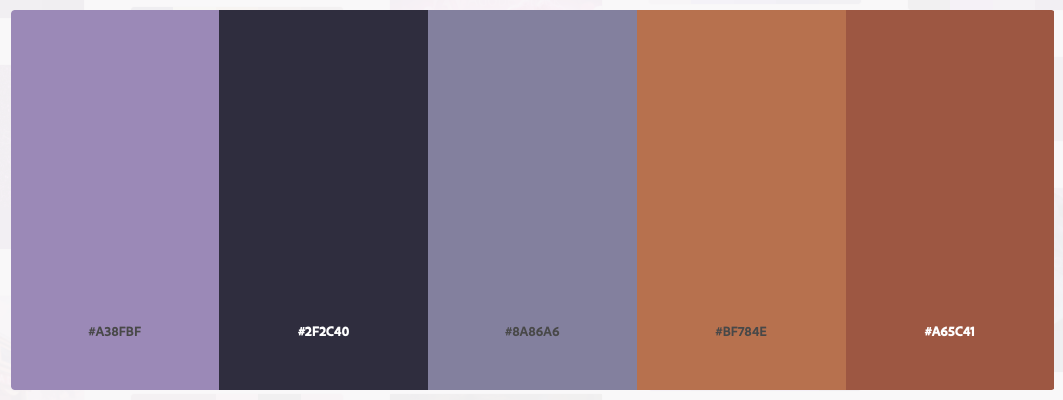

Mercedes-Benz

Their slogan, ‘The best or nothing,’ says it all. Few people would buy a Mercedes because of its crash test rating, gas mileage or even for the heated seats. Ultimately, people buy Mercedes because the brand is exclusive.
When you roll up in a Mercedes, the folks around you instantly have an idea of your financial status. You don’t have to say a word. That quiet projection of power is what a ruler brand is all about.
Rolex
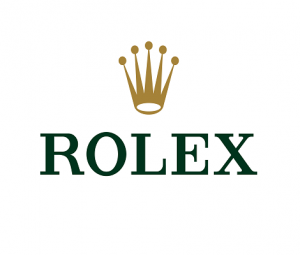
Rolex projects the impression that those who wear their watches are winners. Their ads tell stories of success and pride. Wearing a Rolex announces your status and your percieved power.
By keeping the brand exclusive and expensive, Rolex managed to attract the Ruler type of people and hence align with their archetype. This in turn gave Rolex it’s own archetypal flavor.
Frequently Asked Questions
What are the core traits that define the Ruler brand archetype?
The core traits that define the Ruler brand archetype are as follows:
Leadership: Natural leader, taking charge and providing direction, bringing order and structure.
Competence: Projects expertise and quality, striving to be the best in their industry.
Power: Powerful and authoritative, asserting dominance and influence.
Wealth & Success: Associated with luxury, exclusivity, and high status.
Reliability: Trustworthy and dependable, delivering on promises.
Goal-Oriented: Driven by clear vision, working systematically toward objectives.
Stability: Creates a stable, orderly environment through control.
Exclusivity: Maintains an air of exclusivity and high quality.
Key Takeaway: It’s important for businesses considering this archetype to embody these traits consistently across all aspects of their branding, from visual identity to messaging and customer interactions.
How can my business embody the Ruler archetype’s primary goal of bringing order to chaos?
To embody the Ruler archetype’s primary goal of bringing order to chaos, your business can take several steps:
Offer Solutions: Position your business as a solution provider that simplifies complex problems or situations.
Assert Leadership: Be a thought leader in your industry. Share insights, trends, and knowledge.
Consistency: Ensure that your brand, products, and services are consistent in quality and delivery.
Systematic Approach: Use an organized, structured approach in your operations and customer interactions.
Clear Communication: Clarity in messaging helps reduce confusion and create a sense of order.
High Standards: Maintain high standards in all aspects—from customer service to product quality.
Remember: The Ruler archetype is all about projecting strength, control, and competence. Embodying these traits helps you bring order to chaos for your customers.
How can I strategically express power to achieve my end goals?
Thought Leadership
Share unique insights, data, and expert knowledge through blog posts, white papers, webinars, and speaking engagements.
Quality & Excellence
Uphold high standards in all operations—from product quality to customer service—to underscore your brand’s power and position.
Confident Communication
Make bold claims backed by evidence, share success stories and case studies highlighting your brand’s strengths.
Influence & Partnerships
Partner with influential brands or individuals to amplify your reach and credibility.
Exclusivity
Create exclusive offerings or experiences to build prestige and power around your brand.
Assertive Marketing
Use aggressive advertising campaigns, high-profile sponsorships, and high-visibility marketing tactics.
As a Ruler brand, your power should be used to create order, provide reliable solutions, and allow your customers to align with success and high status.
What types of customers are most likely to resonate with a Ruler brand?
Customers who resonate with a Ruler brand are typically those who themselves are dominant, ambitious, and unafraid to take bold action. They appreciate the sense of order, control, and excellence that Ruler brands project.
Customer Profile Characteristics
- Have high standards and demand the best of the best
- Value quality and exclusivity, willing to pay premium prices
- Not price-sensitive—focused on value, quality, and prestige
- Value stability and reliability in their brand choices
- Attracted to brands with competence, leadership, and track record of success
- Prefer brands that provide straightforward, effective solutions
Note: While these characteristics are typical, each customer is unique, and different aspects of a Ruler brand may appeal to different people.
Are there any potential weaknesses or pitfalls when embodying the Ruler archetype?
Potential Pitfalls
- ⚠️Perceived as Stodgy or Outdated: Emphasis on order and traditional power can create an impression of rigidity.
- ⚠️Elitism & Unapproachability: High standards and exclusivity may alienate some customers.
Mitigation Strategies
- ✓Introduce new, innovative products to demonstrate adaptability
- ✓Do the unexpected occasionally (e.g., special sales events)
- ✓Use social media marketing to engage new demographics
- ✓Embody leadership that is fair, responsible, and supportive
What strategies can I employ to avoid being perceived as stodgy or unyielding?
Balance authority and power with adaptability, innovation, and engagement:
Regularly introduce new products/services that communicate forward-thinking
Breathe new life with unexpected events, collaborations, or releases
Show the human, relatable side through behind-the-scenes content
Update strategy and design to align with trends and expectations
Promote diversity and inclusion in leadership and workforce
Prioritize sustainable practices and social responsibility
How can I ensure my brand doesn’t alienate customers who may not resonate with the Ruler archetype?
Inclusivity: Communicate that your products are for everyone who desires quality and excellence.
Diverse Stories: Show a wide range of people benefiting from your product or service.
Provide Value: Deliver outstanding value in quality, reliability, and after-sales service.
Customer Engagement: Ask for input and feedback to make customers feel valued and heard.
Community Involvement: Show commitment to the broader community through philanthropic efforts.
Balance Power with Humility: Recognize your team, customers, and others who contribute to success.
Remember: There is room for flexibility and nuance within the archetype to appeal to a wider range of customers.
